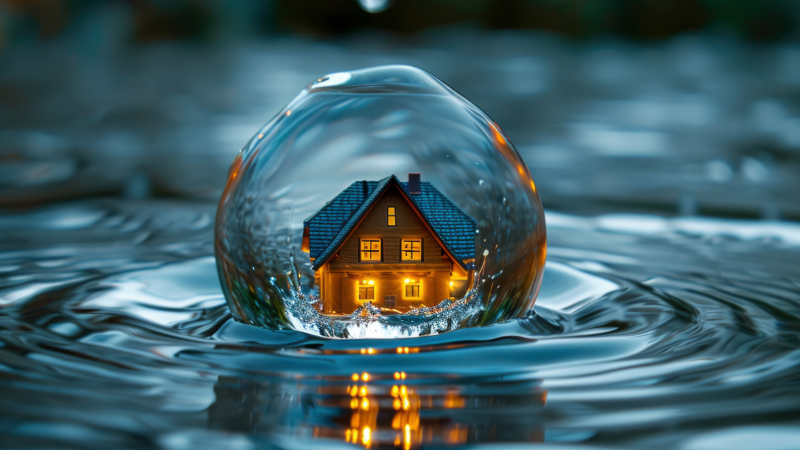Water remediation is a crucial process that can save your house from devastating water damage. Whether it’s a burst pipe, a leaky roof, or a flooded basement, water remediation professionals are trained to restore your home back to its pre-damaged state.
Understanding the Basics of Water Remediation
At its core, water remediation involves the systematic removal and drying of water from a property following an incident of water damage. The process employs an array of specialized tools, including high-powered pumps to extract standing water, dehumidifiers to tackle moisture in the air, and air movers to facilitate the drying of surfaces. Equally important is the application of disinfectants and antimicrobial treatments, which are used to clean the affected areas. These steps are critical in mitigating the risk of mold proliferation and eliminating bacteria and other pathogens that can pose health risks.
The Immediate Benefits of Water Remediation
Water remediation acts as a swift response to water damage, crucially halting the progression of deterioration within your home. This rapid intervention is vital in mitigating the impact on structural integrity, which, when left unchecked, can lead to extensive repairs. An immediate effect of initiating water remediation is the potential salvage and rehabilitation of personal items and household furnishings. The process aids in rescuing items like upholstered furniture and electronic devices from irreversible damage, significantly reducing the financial burden of replacing these items. Moreover, the swift removal of water and moisture through remediation efforts drastically decreases the likelihood of mold and mildew formation, ensuring the environment within your home remains healthy and free from contaminants that could pose health risks to its occupants.
Long-Term Impact of Water Remediation on Your Home
Water remediation plays a pivotal role in not only restoring your home after water damage but also in preserving its long-term integrity and market value. By tackling water damage issues promptly through professional remediation, homeowners can avert the gradual degradation of their property’s structure and aesthetics. The process prevents issues such as mold growth and wood rot, which if left untreated, can lead to significant and costly repairs down the line. Additionally, water remediation ensures that the home’s indoor environment remains safe and healthy, free from the harmful effects of moisture and mold, which could compromise the well-being of its occupants over time.
Identifying the Signs of Water Damage Early
To effectively mitigate the potential for extensive water damage, homeowners should be vigilant in spotting early indicators. Unpleasant, musty smells often suggest hidden moisture or mold growth, which is a direct consequence of water intrusion. Visible signs include discolorations or water marks on walls and ceilings, indicative of leaks that may be lurking above or behind these surfaces. Similarly, noticeable changes in the flooring, such as warping, buckling, or the appearance of mold, can signal water damage from below. Another telling sign is the blistering or peeling of paint and wallpaper, a reaction to the excessive moisture that compromises their adhesion.
Professional Versus DIY Water Remediation
Expert teams bring a depth of knowledge and access to advanced equipment that far surpasses the toolkit of the average homeowner. They employ high-powered pumps, dehumidifiers, and other specialized machinery to efficiently tackle the extraction and drying process. Moreover, their experience allows them to identify and address hidden moisture pockets and potential mold issues that might elude a DIY approach. While handling smaller-scale water damage might seem manageable on your own, the risks of incomplete drying and undetected mold can lead to long-term problems.
Preventative Measures to Avoid Future Water Damage
Regular home inspections are essential, allowing for the early detection and repair of leaks that could escalate into more severe problems. Keeping your plumbing system in top condition through routine maintenance will also ward off unexpected failures that can lead to water intrusion. Ensuring that windows and doors are properly sealed prevents rainwater from seeping into your home, while maintaining optimal drainage around your property helps to steer water away from your foundation, reducing the risk of basement flooding. The strategic installation of a sump pump can be a frontline defense against water accumulation in vulnerable areas of your home, particularly basements. Additionally, integrating a dehumidifier in areas prone to dampness can assist in maintaining lower humidity levels, discouraging mold growth and further water damage. Finally, investing in a water leak detection system offers real-time alerts to the presence of water where it shouldn’t be, enabling quick action to mitigate potential damage. By implementing these preventative strategies, you can significantly decrease the likelihood of water damage, preserving the integrity and comfort of your home for the long term.

